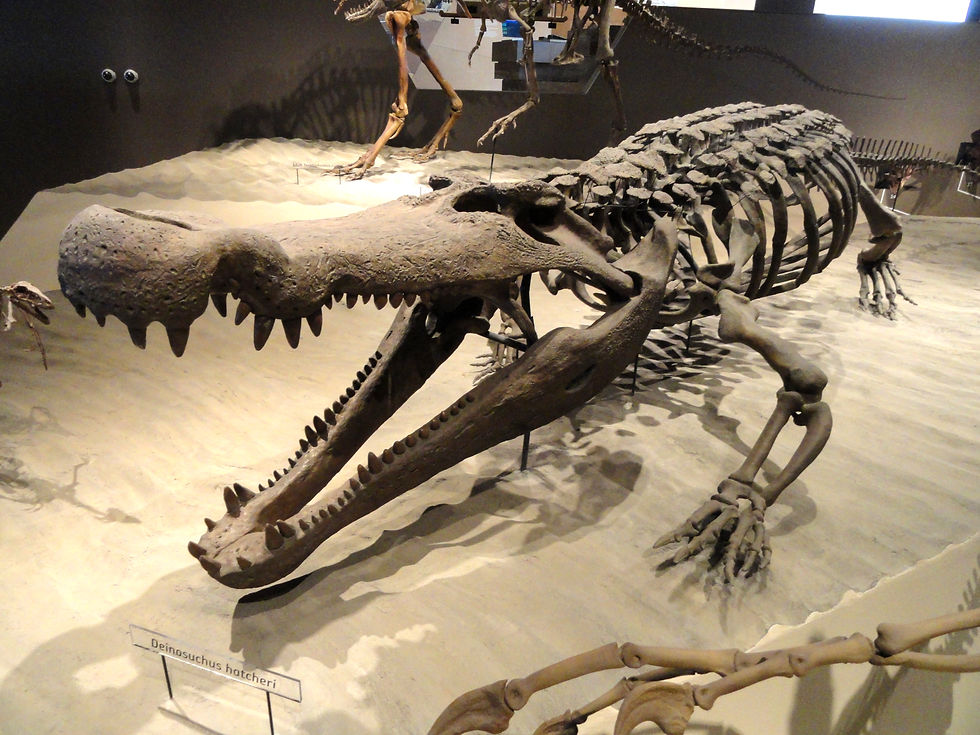Exploring the Fossils of Connecticut USA
- Wayne Munday
- Sep 7, 2023
- 3 min read
Updated: Dec 16, 2024
The U.S State of Connecticut may well be the third-smallest state by area in North America and known for its annual brightly coloured fall (Autumn) foliage season that begins in late September and extends through early November. Connecticut is also known for its geodiversity and 1991 designation of the Early Jurassic theropod known as the Eubrontes Giganteus a relative to the Dilophosaurus "two-crested lizard" as the official state dinosaur.

Brief History of Connecticut
Connecticut was one of the 13 original states of the New England Colonies including New Hampshire, Massachusetts, Rhode Island, New York, New Jersey, Pennsylvania, Delaware, Maryland, Virginia, North Carolina, South Carolina, and Georgia.
Connecticut was first settled in 1634 by the early Puritan settler John Oldham and nine others known collectively as the “Ten Adventurers,” after the Massachusetts’ General Court granted them permission to purchase land they called Watertown but renamed Wethersfield in 1637.
By 1662 King Charles II granted Connecticut a Royal Charter. It would not be until 1776 when Richard Henry Lee (1732–1794) from Virginia proposed “The Lee Resolution” from the Virginia Convention requesting that the Continental Congress declare American colonial independence including Connecticut from Britain.
Understandably, Richard Henry Lee would become a prominent figure during the subsequent seven-year Revolutionary War which was the catalyst for American independence concluding with the Treaty of Paris being signed in 1783 and ratified by the US Congress of the Confederation in 1784.

Connecticut's Geodiversity
Connecticut's geological diversity is reflected in its landscape, with the western part of the state featuring rugged terrain and the eastern part characterised by gentler rolling hills. Glacial features like moraines and drumlins are also present in the landscape.
Connecticut's geological history spans hundreds of millions of years dating back to ancient continental formations and oceanic sediments. Connecticut was part of the supercontinent Pangaea and the region experienced tectonic forces that eventually contributed to the formation of the Appalachian Mountains.
During the Mesozoic Era as Pangaea began to break apart from the rifting of continents the Connecticut Valley was formed as a rift basin. Ice sheets advanced and retreated multiple times during the Pleistocene Epoch, leading to glaciations that significantly impacted the state's landscape. The most recent glaciation, the Wisconsin Glaciation, left a profound mark on Connecticut's terrain. Glacial erosion sculpted valleys, lakes, and moraines, including the Long Island Sound.
Once the last glacier had retreated the State of Connecticut was left with a diverse landscape of mountains in the northwest, the Connecticut River Valley and the longest river in New England, coastal areas along the Long Island Sound, forests, rivers, and lakes.

It is the exposures of the Triassic and Jurassic Period sedimentary rocks found along the Connecticut River Valley in the central part of the state that is regarded as the prime site for fossils. These rocks are a combination of sandstone, shale, siltstone, and limestone that were originally alluvial deposits from braided streams and lakes that filled the rift valley.

During the Mesozoic Era both flora and fauna indigenous to Connecticut including various dinosaurs, fish and insects were preserved in the sediments. Interestingly, there are no Cretaceous rocks in which fossils may have been preserved.
The Dilophosaurus
Connecticut is also home to the Dinosaur State Park Arboretum housing one of the largest dinosaur trackways at Rocky Hill with over 2,000 footprints mainly of Eubrontes Giganteus in North America. These tracks are now designated a registered National Natural Landmark by the U. S. Department of Interior.
The Dilophosaurus means "two-crested lizard" was a large 6-meter tall and fast moving theropod carnivorous dinosaur that lived during the Early Jurassic Period and most probably lived within packs. Its distinguishing features were the pair of crests on the top of its skull. The Dilophosaurus had a bipedal stance with sharp, serrated teeth in its jaws for capturing and eating prey.
Many fossils from the region form part of the collection at the Yale Peabody Museum of Natural History in New Haven.







